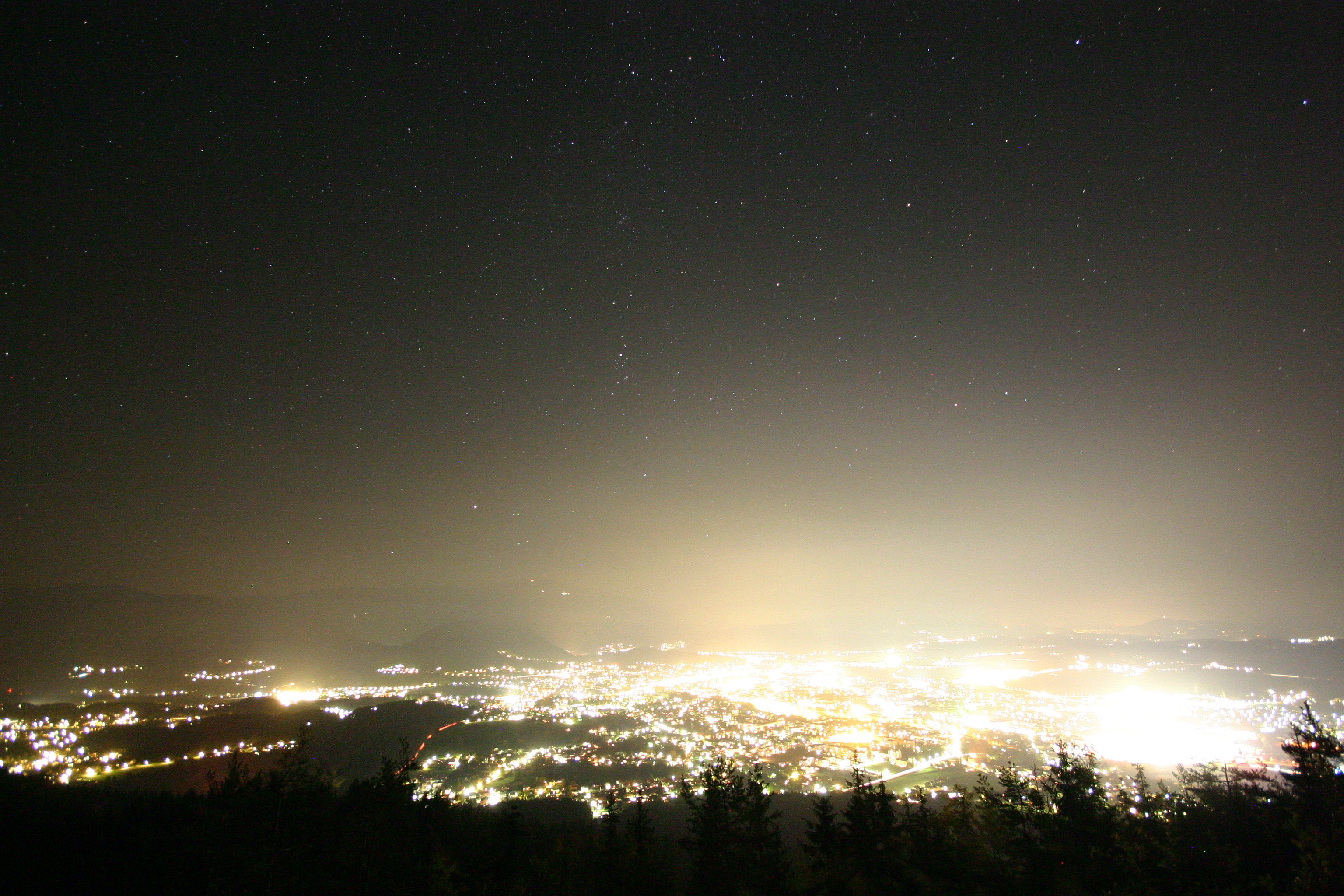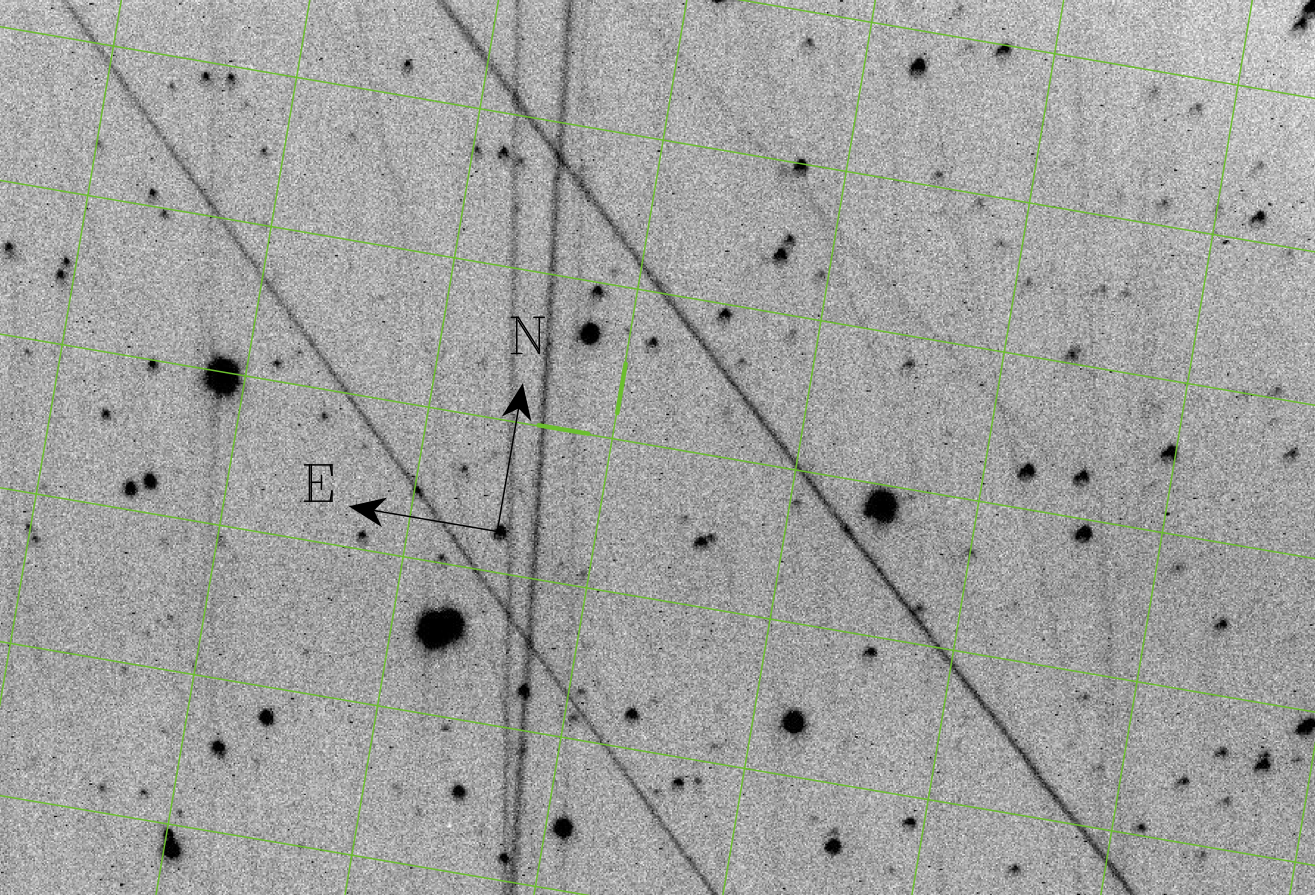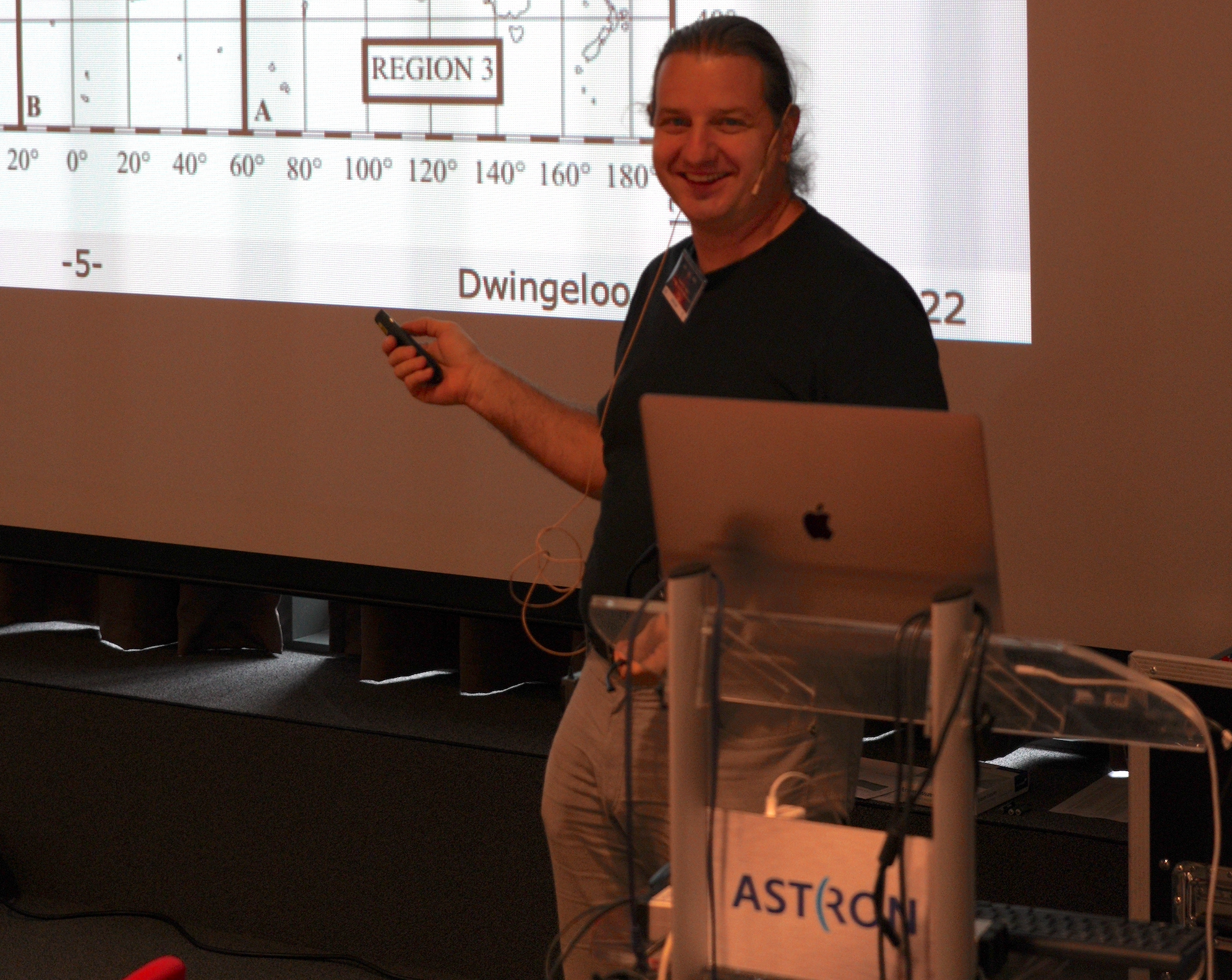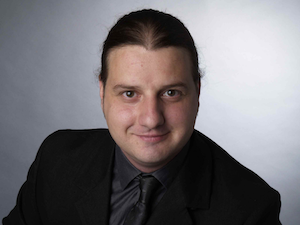by Gyula I. G. Józsa
For astronomy the one conditio sine qua non is the accessibility of a dark and quiet sky. Without access to the sky, earth-bound astronomy simply ceases to exist. Especially in Europe, the unperturbed sky becomes rarer and rarer. In the optical regime, light pollution in the form of both artificial light at night as well as reflections of solar light from satellites make observations for research or at an amateur level increasingly difficult. In most large cities people are lucky if they see more than a few bright stars. In the radio regime, the increasing demand for mobile data carries an increase in the radio traffic and hence creates a radio-loud background threatening radio astronomical measurements.
A lot is at stake.
The night sky has always inspired humankind and has been part of their cultural and natural life cycle. While the larger celestial bodies like Sun and Moon were the subject of interest for millennia, archaeological artefacts dated to 2000 BC do also show stellar constellations (the Star Disk of Nebra) and hence refer to the unperturbed night sky as something precious. The Babylonians considered planets manifestations of gods, and in ancient Greece, the sky was full of gods, heavenly creatures, and mythology. Modern religions refer to the night sky. In the holy books of Muslims, Jews, and Christians, for example, God promises Abraham to make his descendants as numerous as the stars in the sky, which, even in the not so recent past, must have appeared to be an impressive commitment. Some religions and cultures today depend on access to the night sky. The night sky is hence a cultural heritage. Rarely a person would not relate to the stars in the sky one way or the other.
But also fundamental research depends on astronomy. The Copernican revolution, defining the moment in which European society turned towards modern science, is named after an astronomer, because it was the observation of stars and planets and the correct interpretation of those moving the Earth out of the centre of the universe. The astronomers Galileo, Brahe, Kepler, and finally Newton started to describe physical phenomena in the language of mathematics and the first unified physical theory (that of mechanics and gravity) was developed, alongside with the whole mathematical theory of analysis. The first proofs of general relativity were based on astronomical observations. But even in more recent times, fundamental physical principles originate from astronomical observations. The detection of gravitational waves, the discovery of the Dark Matter, which is much more abundant in the universe than any of the visible matter that we know on Earth, and proof of the existence of Dark Energy that dominates the energy budget of the universe are astronomical achievements, fundamental to our understanding of the universe. In the past 20 years 17 Nobel Prize laureates were astrophysicists, the most recent being R. Genzel, A. Ghez, and R. Penrose, who received the Prize in 2020, not counting the Nobel Prize for the invention of the CCD sensor in 2009, the usage of which was pioneered in astronomy. This underlines the importance of astronomy in modern physics. There is also a huge technology transfer from astronomy as a cutting-edge technological enterprise to everyday's life, from medical imaging systems, over the Wi-Fi standard, to CCD cameras and geolocation. The list goes on and on. Without protecting the dark and quiet skies we will lose an enormous amount of scientific and technical potential.

The threats can roughly be divided into three categories.
Firstly, the amount of artificial light in the night (ALAN) has increased significantly in the recent two decades. Energy-saving and cheap lighting techniques latest with the advent of LED illuminants are an important development to reduce the human carbon footprint. On the other hand, their introduction has led to an overall increase of nightly illumination. In the course of this, not only astronomy is affected. Many organisms, vertebrates and invertebrates, depend on the circadian rhythm of day and night. ALAN is suspected to significantly contribute to the insect mass extinction that we are witnessing in recent years and adversely affects human health. ALAN increases the brightness of the sky background (see Fig. 1 for an example of light pollution) over the range of hundreds of kilometres, rendering astronomical observations significantly less effective or even impossible. Countermeasures are simple. Illuminate only what is needed and only when it is needed. Make illuminants as dim as possible and use as warm a colour (temperature) of the illuminant as possible. While there are examples of communities which follow this energy-, environment-, and health- saving advice, it generally proves extremely difficult to convince communities or private owners to follow these simple rules, with the dramatic consequences of the increasing loss of the night.

The origin for the second and third threat to the dark and quiet skies is the increased demand for bandwidth and accessibility in wireless telecommunication. To provide global access to broadband internet, satellite companies have started to deploy very large satellite configurations into low-earth orbits. They are hence non-geostationary orbit (NGSO) satellite configurations and the satellites are moving at high angular speed with respect to the stellar background. Communication over these satellite constellations can then be established either with parabolic antenna terminals or, a more recent goal of the industry, with mobile phone handsets. The number of satellites planned to be deployed goes into the tens of thousands, if not hundreds of thousands. Apart from the worry about potential hazardous situations through orbit crowding in space, astronomy is heavily affected. The single satellites reflect the sunlight and are, without countermeasures, visible even to the bare eye. Especially telescopes with a large field-of-view and observations of potentially hazardous objects (asteroids or comets on a potential collision course with the earth) are impacted. Satellites leave trails in astronomical images rendering the pixels that they cover unusable (see Fig. 2). While the industry, in particular SpaceX/Starlink, attempts to provide countermeasures, it remains to be seen whether the reflected light from the very large satellites that are required to connect to mobile phones can be reduced sufficiently to not significantly harm astronomical observations. Astronomers think that they might be able to deal with a situation where satellites are never seen by the naked eye and get dimmer with an increased height above the Earth's surface.
The third threat comes, again, from the communication industry. The demand for more and more broadband internet access everywhere on the planet results in the tendency to use the radio spectrum as efficiently as possible. This, however, interferes heavily with radio astronomical observations. Firstly, there are fewer and fewer radio bands accessible to radio astronomy, secondly the industry models foresee an access to the internet from high altitudes, either with satellites, or with high-altitude platforms as radio base stations, unmanned drones that stay in the air for long times. This means that concepts of radio quiet zones in remote places to escape transmissions, might not work efficiently in the future. The transmitters are in the sky and not shielded any more. Again, a part of astronomy, which has played a big part in physics (e.g., through the discovery of the microwave background) is in danger.
With this background it is not possible to form an international European astronomy project, aiming at improved access to common resources, without a group that tries to ensure that the most important resource, the night sky, will stay available in the future. The ORP has two such groups. Joint Action 1.5 "JA 1.5 Preserving the sky for future generations" under the coordination of director Michael Kramer, MPIfR, aims at interventions to prevent light and radio pollution. The forum works towards a strategy to interact with stakeholders to reduce light pollution as much as possible. It is active on a regulatory, political, and public level. The global threat, in particular by large satellite configurations led to the establishment (April 2022) of the International Astronomical Union (IAU) Centre for the Protection of the Dark Sky from Satellite Constellation Interference (CPS), co-hosted by the SKAO and NOIRLab (NSF). Its creation was strongly supported by the ORP and JA 1.5 members are working in its "policy hub", to find good approaches to communicate the position of astronomers towards policy makers and the industry and to achieve a maximal protection from the negative effects of satellite configurations. JA 1.5 collects information about relevant national and international organisations that will help towards the goal of night sky protection. A further goal, to raise awareness in the public and among colleagues is pursued in a series of public talks and lectures in training events for young astronomers (see a JA 1.5 member at work in Fig. 3)

Joint Action 2.5 under the same name "Preserving the sky for future generations", also chaired by director Michael Kramer from MPIfR, seeks to measure and mitigate the impact of light pollution using technical solutions. Prediction software in collaboration with the industry, who provides satellite orbits, may help to avoid high numbers of satellite trails on astronomical images. Automatic removal of trails from astronomical images is another necessary step in the creation of science-quality observations. Radio frequency interference excision in the radio regime is another type of software that may be developed in this group. We are already active in monitoring efforts of the impact of radio transmitters at the sites of radio telescopes.
Activities in JA 1.5 and JA 2.5 have started very enthusiastically. In the near future, a combined effort will work towards further contributions to the CPS, information campaigns, and hard- and software development. We are eager and in good hope to contribute to significant improvements in the protection of the adverse effects of light pollution and radio interference.
 Gyula István Géza Józsa studied physics and philosophy the University of Bonn, Germany, where he graduated in Astrophysics in 2002, obtained his PhD in 2006, and worked as a postdoc until 2008, at the Argelander-Institut für Astronomie. In 2008 Dr. Józsa changed to the Dutch radio astronomy observatory ASTRON. His tasks at ASTRON included radio astronomical research and the scientific support of the Westerbork Radio Synthesis Telescope (WSRT). In 2014 Dr. Józsa became Senior Astronomer at the South African Radio Astronomy Observatory (SARAO), to continue his scientific work, also using the South African MeerKAT radio telescope, a progenitor of the Square Kilometre Array. During his time at SARAO Dr. Józsa became Visiting Professor at Rhodes University, Makhanda, South Africa. Since 2021 Dr. Józsa works at the Max-Planck-Institut für Radioastronomie in Bonn, Germany, in spectrum management and science. His passion is the combination of (radio) astronomical support and science.
Gyula István Géza Józsa studied physics and philosophy the University of Bonn, Germany, where he graduated in Astrophysics in 2002, obtained his PhD in 2006, and worked as a postdoc until 2008, at the Argelander-Institut für Astronomie. In 2008 Dr. Józsa changed to the Dutch radio astronomy observatory ASTRON. His tasks at ASTRON included radio astronomical research and the scientific support of the Westerbork Radio Synthesis Telescope (WSRT). In 2014 Dr. Józsa became Senior Astronomer at the South African Radio Astronomy Observatory (SARAO), to continue his scientific work, also using the South African MeerKAT radio telescope, a progenitor of the Square Kilometre Array. During his time at SARAO Dr. Józsa became Visiting Professor at Rhodes University, Makhanda, South Africa. Since 2021 Dr. Józsa works at the Max-Planck-Institut für Radioastronomie in Bonn, Germany, in spectrum management and science. His passion is the combination of (radio) astronomical support and science.